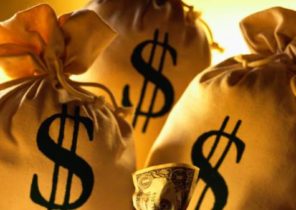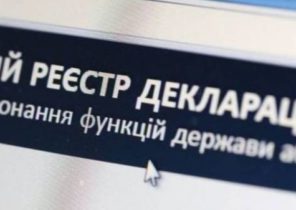The Chinese government declared that traditional Chinese medicine was used to treat 92% of patients with a confirmed diagnosis of novel coronavirus infection covid-19 across the country. What is traditional Chinese medicine? Based on what?
Sunday, June 7, the Information office of the State Council, China presented a White paper entitled “combating covid-19: China in action”, which describes in detail how the country was fighting the spread of the novel coronavirus. It is reported by the Chinese news Agency Xinhua.
China published a White paper in order to tell about the measures taken to combat coronavirus pandemic, to share their experiences in this area with the rest of the world and explain his concept of the fight against the pandemic, according to the official document.
In the face of “the unknown, unexpected and devastating disease,” China firmly launched the anti-epidemic struggle to contain the spread of infection, the document says.
High speed recovery
The White paper says that the proportion of cured patients from a new coronavirus infection covid-19 in mainland China exceeded 94%. As of the end of may 2020 in mainland China had registered a total of 83 017 confirmed cases covid-19, while 78 307 infected persons were discharged from hospitals after recovery, and 4,634 people have died from the disease, it is noted in the White paper.
It is emphasized that traditional Chinese medicine was used to treat 92% of patients with a confirmed diagnosis of novel coronavirus infection covid-19 across the country.
According to the White paper entitled “combating covid-19: China in action”, was developed a set of protocols for the diagnosis and treatment of these diseases using methods of traditional Chinese medicine, which cover the whole process of care for treatment of patients with mild and moderate symptoms, patients are in serious and critical condition and their recovery from illness. They were distributed and used across the country.
The White paper notes that more than 90% of patients with a confirmed diagnosis covid-19 in Hubei province were treated with traditional Chinese medicine, which has proven its effectiveness.
What is traditional Chinese medicine?
History of traditional Chinese medicine dates back well over two millennia. It is important to note that since then, she has not undergone significant changes. The basic concept is that the human body circulates vital energy “Qi” and any failures in its work contribute to violations of the body and cause diseases. It is believed that failures in the “Qi” caused by the violation of the balance of opposite and complementary forces, called “Yin” and “Yang”. This is stated on the website of the medical institution Johns Hopkins Medicine.
The ancient Chinese believed that man is a microcosm of the Universe, which is closely associated with nature and subject to its rules. The basic concept involves maintaining a balance between health and disease. Thus, the treatment methods of traditional Chinese medicine aims to restore balance through individual treatments.
That is believed to rebalance the energy each individual needs to find harmony between the internal organs of the body and the external elements — earth, fire, water, wood and metal. To achieve harmony is possible by the following methods: acupuncture, cupping massage, acupressure and herbal medicine.
According to the Johns Hopkins Medicine website, some of the herbal drugs used in traditional Chinese medicine, can act as a full of medicine, but also can cause serious side effects.
In 2004 the FDA food and drug administration decided to ban the sale of supplements with ephedra and products with other plants containing alkaloids of the group of ephedra, because they cause complications such as heart attack and stroke. Recall that ephedra is a Chinese herb that has been used in food additives.
The site also States that traditional Chinese medicine should not be used as a replacement for medical treatment, especially in severe cases, but it can be used effectively as a complementary therapy.
It should be noted that some of the herbal drugs used in traditional Chinese medicine in combination with medicines can have a negative impact on the body. You should inform your doctor that you use traditional Chinese medicine.
Wild animals
In traditional Chinese medicine uses the body parts of wild animals. For example, bear paw is one of the favorite foods in China. Moreover, bear paws represent one of the eight delicacies that have been traditionally used in Chinese medicine for millennia. About it reports the German website Deutsche Welle.
Most of the methods of treatment of patients using parts of wild animals and medicinal plants has not been proven effective in modern medicine.
Nevertheless, experts of traditional Chinese medicine gave an attractive and promising names of the different medicines, to encourage people to use them. For example, a drug from the bat droppings called “Yeh Ming Sha” or “sand treasure that glows in the night.”
How effective is it?
The white paper reports that traditional Chinese medicine was used to treat 92% of patients with a confirmed diagnosis of novel coronavirus infection covid-19, but there are some doubts about its effectiveness.
Lotan Swiss newspaper quoted a member of the French scientific Council for Chinese medicine Mark Ferrier that the herbal medicines used in traditional Chinese medicine, can help fight fever or mucus, which are symptoms of viral pneumonia. However, he warns that some treatment methods are questionable. According to Ferrier, in traditional Chinese medicine there are no approved standards or competencies, as it completely depends on the individual approach to treatment.
Conventional treatments were widely used in China alongside Western drugs during the epidemic of SARS, SARS-CoV
2003 that killed 774 people worldwide. However, in 2012, the Cochrane collaboration conducted a study that demonstrated that this treatment combination “changed nothing” in the fight against the epidemic.
According to Swiss Newspapers, Beijing published in 2016, the first White book on traditional Chinese medicine, which highlighted the creation of specialized centers in developing countries. Moreover, the Chairman of China XI Jinping called traditional Chinese medicine and pharmacology “treasure of the Chinese civilization”, and also noted that it must have the same value as modern medicine.
Ferrier notes that traditional Chinese medicine is only one component of the “cultural message that Beijing intends to spread around the world.” After several years of advocacy campaigns the Chinese managed to convince the world health organization to add a Chapter on traditional Chinese medicine in the “International classification of diseases”. The Advisory Board of the European science academies (EASAC) has opposed the proposal because of “big problems” related to the lack of scientific data proving the efficacy of Chinese medicine.







